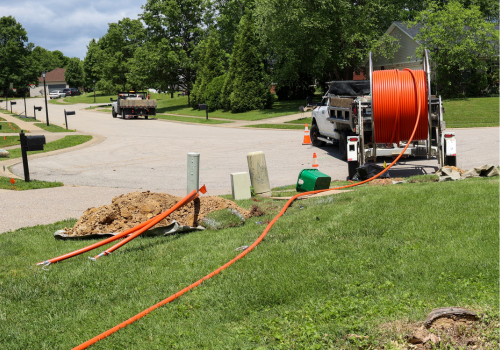Winter is right around the corner and it’s ready to wreak havoc on utility equipment if you aren’t careful.
We asked Tim Brockschmidt, Maintenance Client Partner with Element Fleet Management, headquartered in Toronto, Canada, for some useful maintenance tips ahead of the season. Element is one of the largest fleet management companies in the world, managing more than 1.4 million vehicles for a variety of industries including utilities, construction, and oil and gas. While utility equipment covers a wide range of products, including trucks, lifting equipment, trenchers, and other earthmoving equipment, these fundamental tips will ensure your equipment won’t be down when temps dip below freezing.
1. Be prepared
Brockschmidt advises utility equipment fleet managers to be prepared when it comes to winter maintenance tasks. “People and equipment today are stretched thin, and maintenance can sometimes take a back seat when there are 10 jobs waiting,” he says. “That’s the biggest mistake.” When routine winter maintenance tasks aren’t completed, it may result in costly component failure and unplanned downtime. “With labor shortages and supply chain challenges, maintenance managers may need a little longer lead time to get these tasks completed,” adds Brockschmidt.
One way to keep on top of maintenance tasks is to utilize equipment maintenance software. Alerts provide reminders of when winter maintenance tasks are due, so managers can get them on the schedule. Element offers a comprehensive preventative maintenance program with the ability to create custom schedules, generate notifications in advance of the due dates to allow for advance scheduling, and compliance reporting to identify assets that are overdue for service.
2. Daily inspections are key
“Pre-trip and post-trip inspections are even more important in extreme weather,” says Brockschmidt. Among the key things to check is the condition of tires including proper inflation, which can lose pressure in winter. Ensure all fluids are at proper levels. Leaking fluids could indicate early warning signs of a component failure and should be addressed to avoid untimely failures. To ensure safety, check windshield-washer fluid levels, wiper blades, and defrosters to ensure good visibility in bad winter weather. “Daily inspections allow you to take corrective action before the vehicle is down.”
3. Maintain battery life
“When you get into colder weather conditions a battery loses a certain percentage of its available charge as the temperature goes down,” says Brockschmidt. At freezing, capacity is reduced by 20%, at -22 degrees capacity drops to 50%. To maintain battery life, inspect the battery regularly for signs of corrosion, leakage, or a cracked case. If a truck or piece of equipment is left unused for weeks or months, someone should operate the vehicle to help ensure the battery is kept fully charged.
Fleets that are now operating electric vehicles (EVs) need to be aware of how cold temps affect driving range. A study by American Automobile Association (AAA) found that temperature dips to 20°F and the HVAC system are used to heat the inside of the vehicle, the average driving range is decreased by 41 percent. This means for every 100 miles of combined urban/highway driving, the range at 20°F would be reduced to 59 miles. “The important thing to remember is to keep that asset plugged in and fully charged when not in use,” says Brockschmidt.
4. Warm the engine
For easier diesel engine starts in cold weather Brockschmidt recommends the use of engine block heaters. “When it’s cold, oils get thick like tar. An engine heater keeps all the lubricants warm and moving so the vehicle can turn over and start,” says Brockschmidt. “It’s a good tool to utilize in winter conditions.”
5. Run on clean fuel
Removing dirt and water from the fuel is important to keep diesel engines running well in winter. Diesel fuel starts to gel below 40 degrees Fahrenheit which can clog filters. “Changing fuel filters and water separator filters before winter is paramount for a diesel engine performance” says Brockschmidt.
6. Use data and analytics
“The maintenance journey of utility fleets can be greatly improved with access to usage-based and diagnostic data,” added Brockschmidt. “Utilizing connectivity and telematics solutions allows fleets to monitor tire inflation, battery life, and other key indicators that impact the overall health of an asset. Fleets can proactively address issues via alerts or when the vehicle is in the shop for routine maintenance.”
While you can’t change the weather conditions you’ll be facing, preparations, technology, and data analytics will go a long way toward helping you manage what Mother Nature brings this winter.
Subscribe to The Utility Expo monthly newsletter to receive more industry insights like this.












